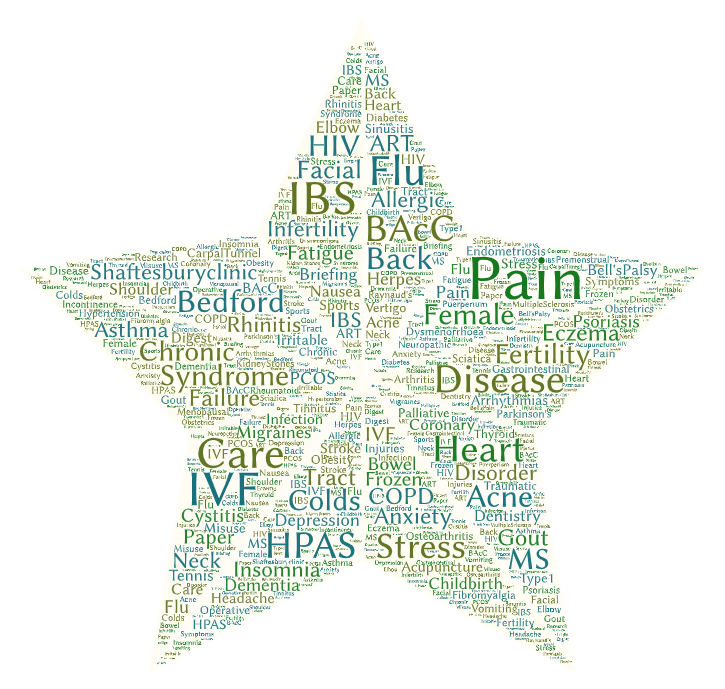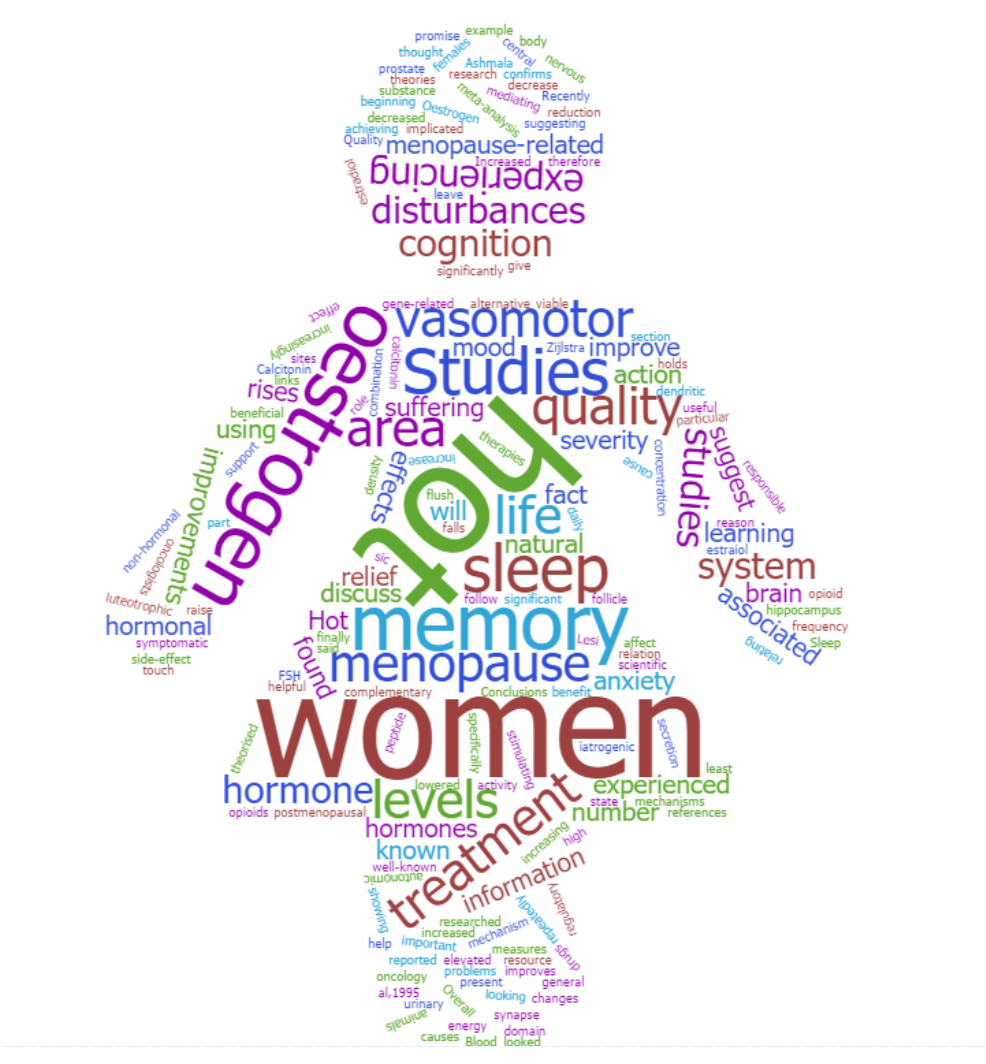Important to know: Chronic health conditions should be addressed under direct medical supervision of your GP or consultant, and acupuncture would be an adjunct or complement to usual care – we advise that you let you doctor know when you use this approach.
Acupuncture is a popular choice for women for a number of issues relating to the menstrual cycle, fertility, pregnancy, post-partum, PMS and the menopause. A large number of research-based factsheets have been produced by the British Acupuncture Council, outlining research finding for many gynaecological conditions (see “resources” at the base of this page for links).
A scholarly search of the available research studies on “acupuncture” + “gynaecology” reveals over 8,400 papers from journals, and narrowing this to + “RCT” leads to over 1,250 hits, of which 40% have been carried out since 2017. From this we can deduce that acupuncture is widely used and scientifically researched in gynaecological conditions, and that the pace at which the research is being carried is increasing – leading us to understand this is an area worthy of appraisal.
Below (under Resources) is a list of specific conditions for which the British Acupuncture Council (BAcC) has produced evidence-based factsheets regarding many aspects of women’s reproductive health.
The BAcC has also produced a paper on gynaecology and acupuncture, which in addition looks at the use and evidence of effectiveness of acupuncture in dysmenorrhoea, dysfunctional uterine bleeding and chronic pelvic inflammatory disease, where the BAcC concluded that there is a growing body of evidence to support the value of acupuncture in addressing these conditions.
Pregnancy: Acupuncture is safe in pregnancy, but do ensure you tell your midwife (and consultant if you are under one) that you’re using it, and also tell your acupuncturist if you are pregnant or trying for a baby, as there are certain points which must be avoided in pregnancy.
About the research:
The means and quality of how research is carried out varies considerably from country to country, and in terms of how an intervention is compared to another intervention (or a control). It is very important to note that “sham” acupuncture where needles are placed other than in acupuncture points it not an inert process and that comparing sham and “true acupuncture” may therefore not give a clear picture alone, but and form a part of a research body where acupuncture versus no treatment, conventional treatment or a different approach also form part of the evidence base.
A large number of resources are available in the References section below, as well as in the BAcC’s factsheets. When reading the research it is important to know that systematic reviews or meta analyses of a large number of high-quality research studies are the very best way to be able to say to what extent a given treatment can address a condition, symptom, or set of symptoms. The next best level of evidence is the randomised controlled study (RCT) which uses a systematic technique to compare two or more groups of patients receiving different treatments (or a treatment against a “control” of no treatment). As mentioned above, the control group is of particular interest in how acupuncture trials are carried out as it is hard to blind a patient to whether they are having a needle inserted or not, and even more challenging to blind the researcher to this. In the case of animal studies (as discussed below) it is easier to make more objective measures and avoid placebo effect. In studies the n= figure tells you how many people were participants in the study.
Research studies have been done on various aspects of acupuncture and the female reproductive system, to examine measurable effects occurring in the body following acupuncture, these look at levels of certain hormones and neurotransmitters (chemical messengers) in the blood, scans of the brain in action (fMRI) and other objective measures that can be compared on a before- and after- basis.
Research into mechanisms of action indicates that acupuncture can modulate activity in many of the body’s regulatory systems, including the nervous system; endocrine system and influence the levels of different hormones and neurotransmitters (chemical signals) in the body, blood stream and brain (Stener-Victorin, 2006; Stener-Victorin and Wu, 2010; Gerhard et al, 1992). Experimental studies have also shown acupuncture to improves blood flow to the uterus and ovaries (Stener-Victorin et al, 1996 (n=10 women’s uterine artery blood flow impedance was measured after electro-acupuncture treatment).
Another type of research commonly carried out is in animal models, primarily rats, where measurements can be made as to the effects of acupuncture. Here, any placebo effect and subjectivity on outcomes is overcome by the fact that objective measures of levels of hormones in the blood, etc can be made. The hormones and neurotransmitters that have been shown to be thus influenced in physiological studies include:
- Gonadotrophin releasing hormone (GnRH) increased in the hypothalamus in a rat model using specific acupuncture points and channels, (Wang et al, 2010; Zhu et al, 2019 – points used SP6 and ST36); electroacupuncture normalised circulating gonadotrophin levels in a rat model (Maliqueo et al, 2015)
- LH (luteinizing hormone) and progesterone blood levels have been found to be significantly raised by true acupuncture treatment at points ST36 and SP6 in a rat model, (He et al, 2009), the same study also found vascular endothelial growth factor levels in the ovaries to be raised in the rats which received true acupuncture (versus sham acupuncture at nearby non-points
- Blood Cortisol and Prolactin (PRL) levels were normalised in acupuncture patients a study of 67 women undergoing IVF during ovarian stimulation (Magarelli et al, 2009, Magarelli et al, 2006), prolactin levels influenced by acupuncture in laboratory rat models (Sheng and Xie, 1989; Xiong et al, 2015; Liu et al, 2007)
- Testosterone and Estradiol – in a rat model the use of CV4, CV3, SP6 and Zigong points downregulated testosterone and estradiol (in females) and improved the development of their reproductive organs (Zhang et al, 2009)
See our Fertility and Pregnancy page for full details on the studies and mechanisms of the above.
Resources:
The British Acupuncture Council has several relevant evidence based factsheets about Women’s Health, including specific research, trials and mechanisms of action for acupuncture in these conditions.
BAcC Childbirth and acupuncture factsheet
BAcC Dysmenorrhoea (painful periods) and acupuncture factsheet
BACC Diabetes (includes Gestational Diabetes)
BAcC Endometriosis and acupuncture factsheet
BAcC Female Fertility and acupuncture factsheet
BAcC Infertility and ART factsheet
BAcC Fertility and IVF briefing paper
BAcC Male Infertility Factsheet
BAcC Menopausal Symptoms and acupuncture factsheet
BAcC Obstetrics (pregnancy and childbirth) and acupuncture factsheet
BAcC PCOS (Polycystic Ovarian Syndrome) and acupuncture factsheet
BAcC Premenstrual Syndrome and acupuncture factsheet
BAcC Puerperium (postnatal / postpartum) acupuncture factsheet
The British Acupuncture Council also has a review paper on Gynaecology and acupuncture: The evidence for effectiveness
Our own page on Fertility, Pregnancy and Acupuncture
Our own blog on Acupuncture and the Menopause
References:
Gerhard I, Postneek F. Auricular acupuncture in the treatment of female infertility. GynecolEndocrinol. 1992 Sep;6(3):171-81.
He, D.J. Huang G.Y. Zhang M.M. [Effects of acupuncture on the luteal function of rats with dysfunctional embryo implantation] [Chinese]. Zhongguozhenjiu. 2009; 29(11):910-913
Magarelli, P.C.; M. Cohen, D.K. Cridennda Proposed mechanism of action of acupuncture on IVF outcomes Fertility and Sterility, Vol. 86, Issue 3, S174-175 Published in issue: September 2006
Magarelli, Paul C.; Diane K. Cridennda, Mel Cohen, Changes in serum cortisol and prolactin associated with acupuncture during controlled ovarian hyperstimulation in women undergoing in vitro fertilization embryo transfer treatment, Fertility and Sterility, Volume 92, Issue 6, December 2009, Pages 1870-1879
Maliqueo, M., Benrick, A., Alvi, A., Johansson, J., Sun, M., Labrie, F., Ohlsson, C. and Stener-Victorin, E., 2015. Circulating gonadotropins and ovarian adiponectin system are modulated by acupuncture independently of sex steroid or β-adrenergic action in a female hyperandrogenic rat model of polycystic ovary syndrome. Molecular and Cellular Endocrinology, 412, pp.159-169.
Sheng, P.L. and Xie, Q.W., 1989. Relationship between effect of acupuncture on prolactin secretion and central catecholamine and R-aminobutyric acid. Zhen ci yan jiu= Acupuncture research, 14(4), pp.446-451.
Stener-Victorin, E. and Humaidan, P., 2006. Use of acupuncture in female infertility and a summary of recent acupuncture studies related to embryo transfer. Acupuncture in Medicine, 24(4), pp.157-163.
Stener-Victorin E, Waldenstraum U, Andersson SA, Wikland M. Reduction of blood flow impedance in the uterine arteries of infertile women with electro-acupuncture. Hum Reprod. 1996 Jun;11(6):1314-7
Stener-Victorin, E. and Wu, X., 2010. Effects and mechanisms of acupuncture in the reproductive system. Autonomic Neuroscience, 157(1-2), pp.46-51.
Wang, S.J., Bing, Z.H.U., Ren, X.X. and Tan, L.H., 2010. Experimental study on acupuncture activating the gonadotropin-releasing hormone neurons in hypothalamus. Journal of Traditional Chinese Medicine, 30(1), pp.30-39.
Xiong, F., Gui, J., Yang, W., Li, J. and Huang, G.Y., 2015. Effects of acupuncture on progesterone and prolactin in rats of embryo implantation dysfunction. Chinese journal of integrative medicine, 21(1), pp.58-66.
Zhang WY, Huang GY, Liu J. [Influences of acupuncture on infertility of rats with polycystic ovarian syndrome] [in Chinese] ZhongguoZhong Xi Yi Jie He ZaZhi. 2009 Nov;29(11):997-1000.
Zhu, H., Nan, S., Suo, C., Zhang, Q., Hu, M., Chen, R., Wan, J., Li, M., Chen, J. and Ding, M., 2019. Electro-acupuncture affects the activity of the hypothalamic-pituitary-ovary axis in female rats. Frontiers in physiology, 10, p.466.


